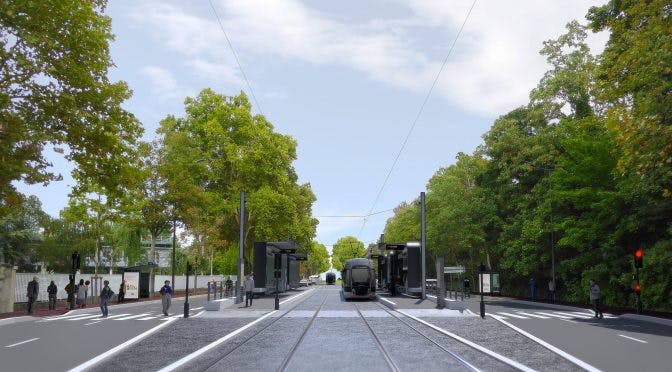The route
The project plans to extend the tram line by 7.5 km, in the heart of the cities of Nanterre and Rueil-Malmaison. With 15 stations, spaced 500 metres apart on average, this new line will offer a local service, as close as possible to the different districts and facilities in the area.
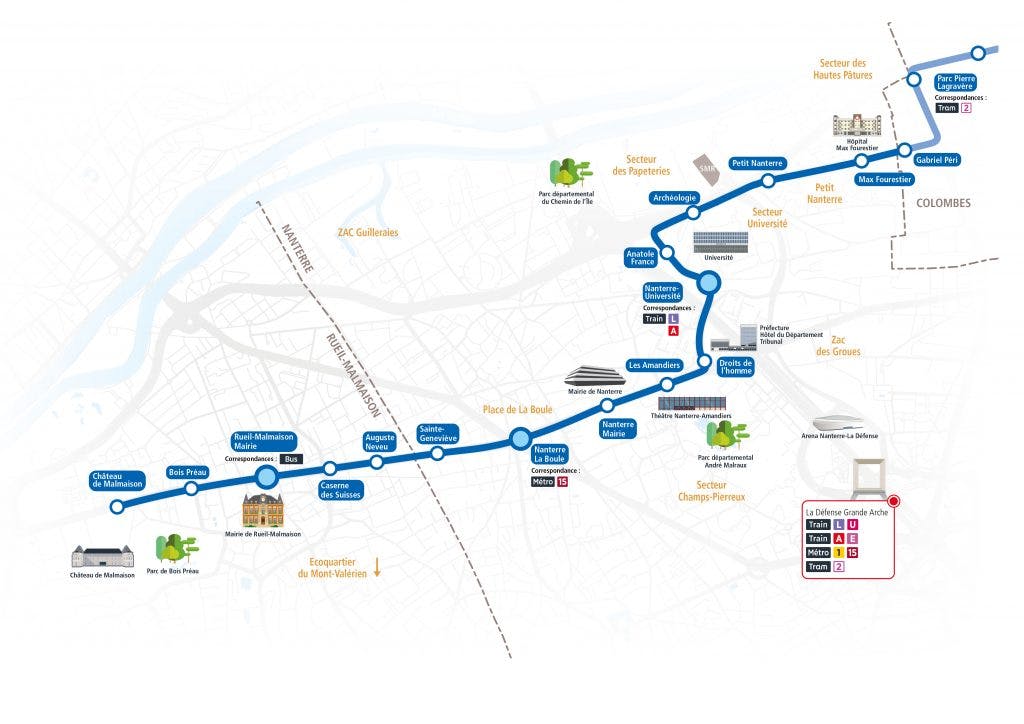
The Tram 1 route
Le Petit Nanterre
The tramway will cross the Petit Nanterre along the Avenue de la République serving the Max Fourestier Hospital, the Okba Ibn Nafaa mosque and the shops in the district. It will facilitate the district's links with the University and the city centre of Nanterre, but also with Colombes and the T2.
The tramway will run in the middle of the tracks, the road will include a lane of traffic in each direction and cycle lanes will be created. As the Avenue de la République is relatively narrow, land acquisitions are necessary on the backdrop of gardens on the north bank.
The car traffic plan will be modified as you approach the Pont de Rouen, with a one-way street between Rue des Saules and Rue du 11 Novembre, which will both limit land acquisitions and reduce transit traffic in the district.
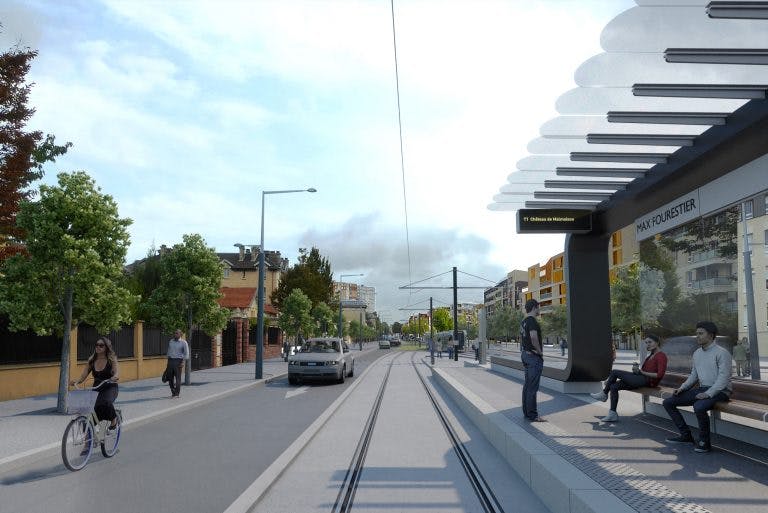
Focus on the Rouen Bridge
In accordance with the lessons learned from the consultation, a peaceful opening will be created under the railway and road tracks of the Pont de Rouen, allowing a new passage away from the motorway, for the tramway, pedestrians and cyclists.
This solution makes it possible to respond more broadly to the challenges of redeveloping this area, in favour of pedestrians and cyclists, and to strengthen the links between Petit Nanterre and the University district.
The spaces near the Pont de Rouen will also be transformed around the future "Petit Nanterre" station, marking the entrance to the district.
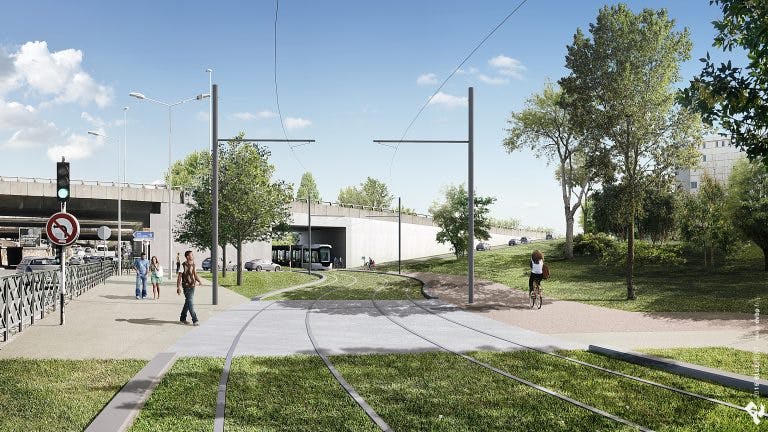
Around the University
Tram 1 will serve facilities of metropolitan scope, such as the University of Paris Nanterre, the administrative city of Nanterre Préfecture. A station will also serve the Collège République. This district includes many urban projects, such as the Papèteries de Nanterre, the fringes of the university and the heart of the district project, near the Nanterre University station.
The tramway will mainly be located on the side of the road.
The Nanterre Université station will be located on the forecourt of the station, for optimal connections with the RER A and Train L.
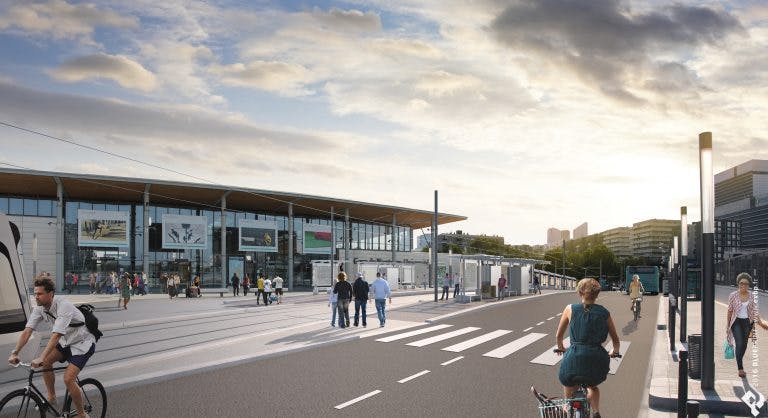
Joliot-Curie – Place de la Boule
Here, Tram 1 will link the prefecture district, the old centre of Nanterre and the entrance to the city of Rueil-Malmaison. It will serve the Théâtre des Amandiers, the André Malraux park, the Palais des Sports, the Hôtel de Ville and the Joliot-Curie high school.
The tramway will mainly be located in the middle of the tracks. The road will include a traffic line in each direction, with the exception of the intersection areas, as well as a continuous cycle route.
The Nanterre – La Boule station will be located on the forecourt of the future metro station 15, for optimal connection conditions.
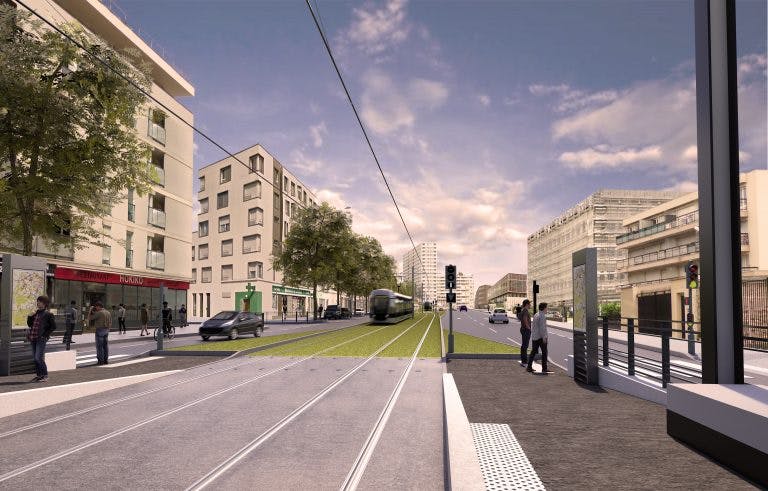
Focus on Avenue Joliot Curie
Avenue Joliot Curie is home to many administrative, school and sports facilities.
The project plans to create a traffic lane in each direction, with the exception of intersections, and a cycle route, to ease traffic conditions. It was also designed to carry out the work at a sufficient distance from the alignment of trees to the north (on the town hall and houses side) in order to preserve it. Most of the trees on the south side (high school and stadium side) will have to be removed and replaced by a new alignment.
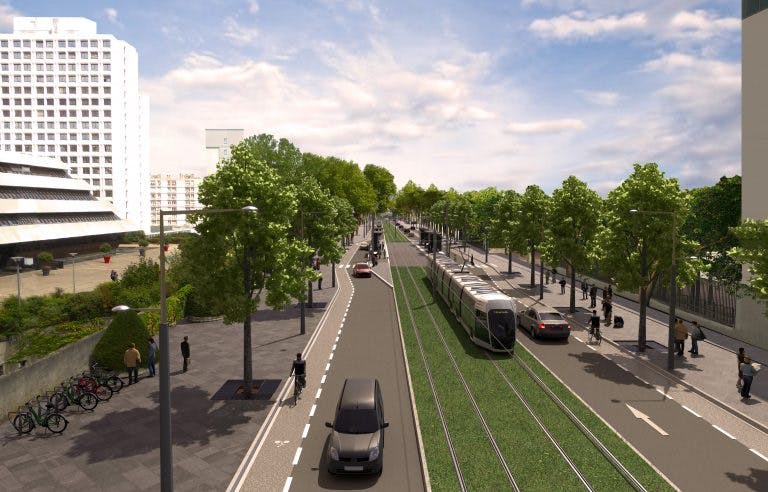
Focus on the Place de la Boule
The Place de la Boule is a gateway to the city centre of Nanterre and a future transport hub for the west of the Paris region. It will accommodate Tram 1, the future metro 15, and several bus lines. The tramway station will be integrated into the forecourt of the future metro station 15, for optimal connection conditions.
The current intersection will be transformed into an emblematic urban square, peaceful and attractive for pedestrians and cyclists. It will benefit from tree planting.
The underground road passages under the square will be maintained. The width of the one located on Avenue du Maréchal Joffre will be slightly reduced, but both directions of traffic will be maintained.

Malmaison
Tram 1 will cross Rueil-Malmaison via Paul Doumer and Napoléon Bonaparte avenues, serving the city centre and its shops, as well as the André Malraux theatre, the Town Hall, the regional conservatory and the French Institute of Petroleum and New Energies. Its route continues to the Château de Malmaison.
The tramway will be located in the middle of the tracks. The road will include a traffic lane in each direction, except for the intersection areas. Cycle lanes will be created, allowing the district to benefit from peaceful and safe living conditions.
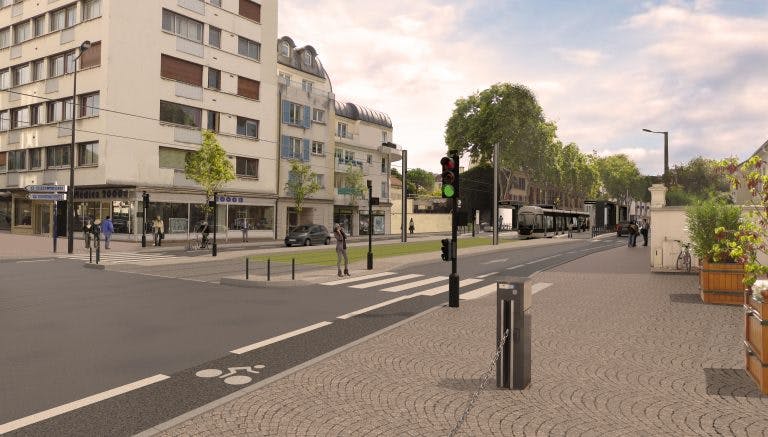
Focus on the city centre of Rueil-Malmaison
The arrival of Tram 1 will make it possible to requalify the avenues Paul Doumer and Napoléon Bonaparte for the benefit of local residents, pedestrians and cyclists. The project plans to build a lane in each direction, with the exception of the main intersections, and the underpass located at the intersection with Boulevard de l'Hôpital Stell will be filled in to allow the tramway to pass.
Cycle lanes will be built and pedestrian crossings of the avenue will be facilitated, making it possible to forge links between the city centre and the villages of Plaine-Gare, Belle-Rive and Bords-de-Seine. The alignment trees that will need to be removed as part of the work will be returned by new subjects. Parking and delivery spaces will be set up near the main shops.
Tram 1 will thus contribute to strengthening the quality and attractiveness of this major axis of the city centre.
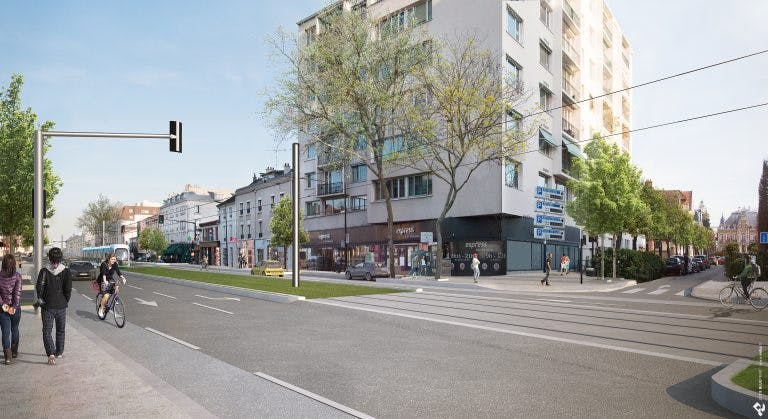
Focus on the terminus
The terminus of the line is located near Place Osiris in Rueil-Malmaison. This location makes it possible to serve both the Château de Malmaison, the Closeaux swimming pool and the sports facilities located nearby.
It has been designed to optimise the conditions for connecting with the bus lines in the area, particularly to and from the Yvelines.
The architectural treatment of the Place Osiris will take into account its historical value as the former entrance to the Malmaison estate, as part of procedures involving the Architect of the Buildings of France.
The terminus will be equipped with bicycle parking and a secure collective locker. A room will also be built to accommodate the tramway drivers.
